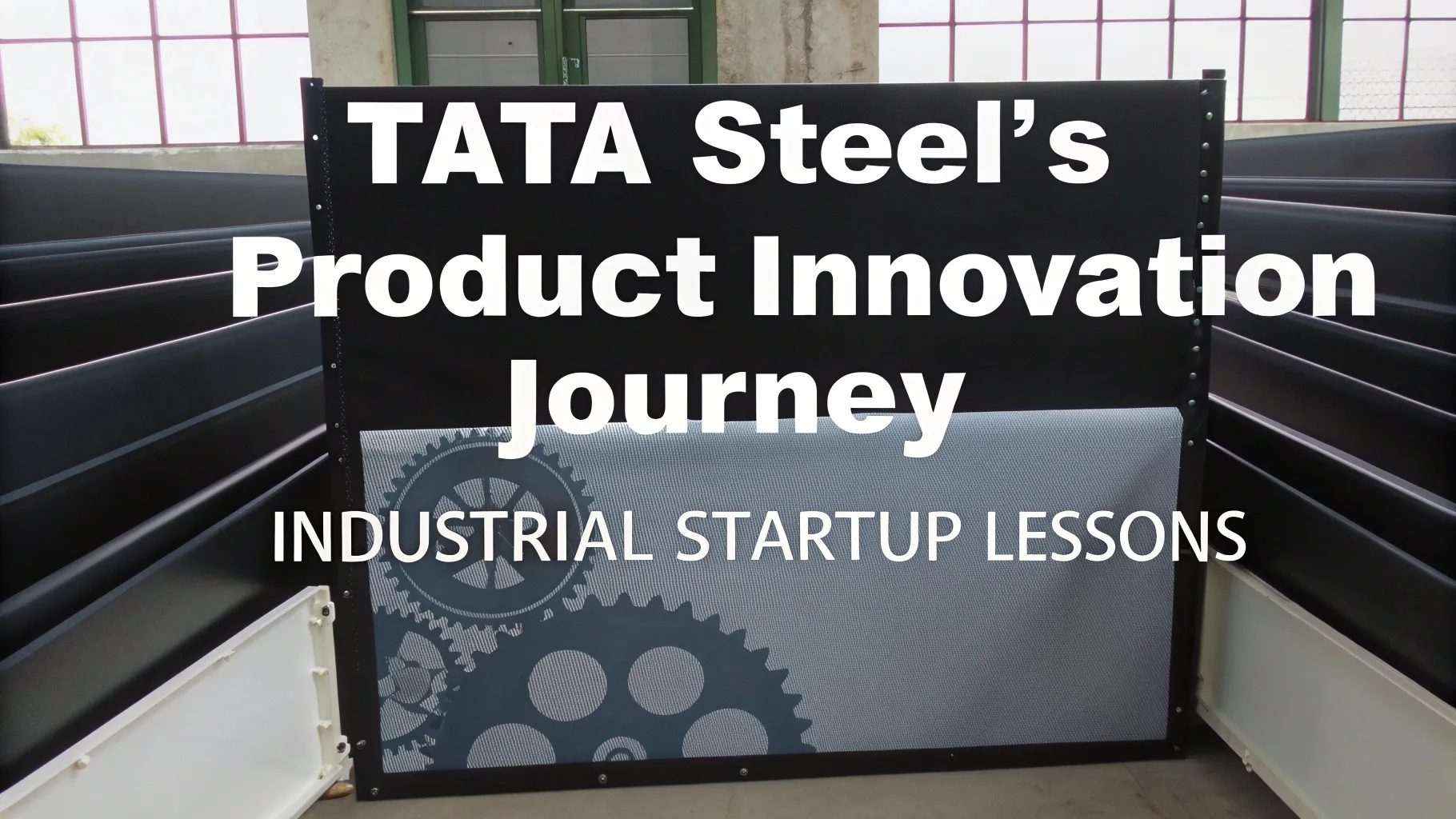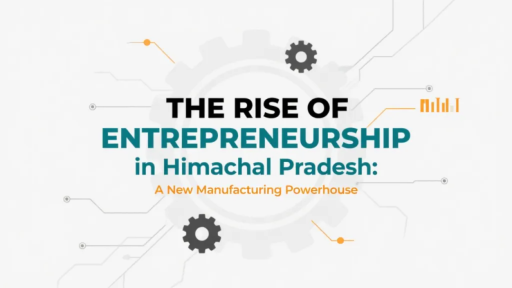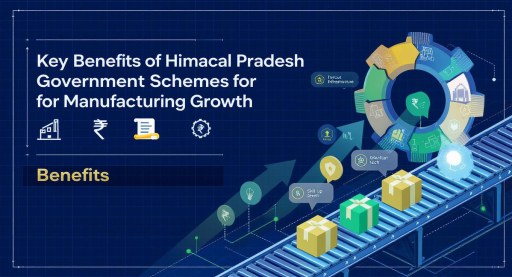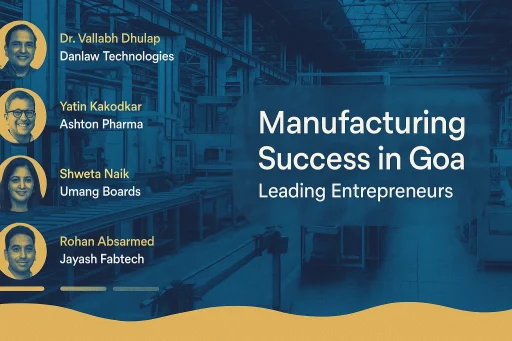Understanding Tata Steel’s Transformation
Understanding Tata Steel’s transformation from a basic steel manufacturer into an advanced innovator provides rich lessons for industrial startups, especially in this age of rapid technological evolution and sustainability focus. It took over a century, but what started as a small Sakchi steelworks in 1907 has evolved into one of the world’s foremost high-strength steels and composites R&D centers, successfully pioneering sustainable production methods.
For modern entrepreneurs and lean startups, Tata Steel‘s innovation journey reveals best practices on integrating R&D from the onset, crowdsourcing innovation through open collaboration, undergoing digital transformations, and making sustainability a hallmark of product development.
Tata Steel At A Glance: 1907 To Today
Founding Vision & Early Growth
The vision for self-sufficient Indian industries set forth by Jamshedji Tata saw fruition with the inauguration of Sakchi Plant in Jharkhand in 1907. Served by nearby coal mines, the works benefitted from Siemens-Martin powered Works which began producing its first ingots by 1912. In the following decades, the company expanded further while also adopting modern blast furnace technologies along with instilling core cultural values such as discipline, quality, continuous improvement that are staples of innovation today.
Achieving Global Leadership in Steel
After gaining independence, Tata Steel expanded within India and also explored global opportunities. Significant strategic acquisitions such as the merger with Corus, a British steelmaker in 2007 and NatSteel of Singapore increased its geographic diversification as well as product range. Currently, Tata Steel has an output of over 30 million tonnes of crude steel annually, selling to over fifty countries and employing roughly eighty thousand people. With this scale, the company could invest in technological development for advanced R&D critical for developing value-added products.
Moving Towards Value-Added Products
By the early 2000s, flat rolled steel was a commoditized market with extremely thin margins. Key customer industries like automotive, construction and appliances started requiring alloys with even higher strength steels along with improved corrosion resistance and enhanced formability. Tata Steel responded by optimizing metallurgy working on HSLA (high-strength low-alloy) Stainless-steel grades, electrical steels for transformers, corrosion-resistant coatings, and specialty items like tailor-welded blanks used in automobile bodies. This change helped drive product innovation for a decade after shifting strategy from “make steel” to “engineer materials.”
Related: Strategic Entry into Galvanized Steel Structures for Solar Projects
Laying Down the Groundwork: R&D and In-House Innovations
Building Of Central R&D
Tata Steel launched their first centralized research facility in Jamshedpur in the 1960s. This was meant to support breakthrough product innovations by having dedicated labs. At this facility, metallurgists and process engineers worked together on steam outgassing improvement cycles, alloy chemistry evaluation, along with pilot scale trials.
Over time, through company-wide culture initiatives that incorporated rigorous process improvement techniques, new ideas started moving faster from lab benches to the shop floors after undergoing kaizen workshops, six sigma projects, staffed cross-functional innovation sprints.
Tata Steel Advanced Materials Research Centre (TSAMRC)
In 2018 TSAMRC or Tata Steel Advanced Materials Research Center was developed in the UK focusing on next generation materials such as metal matrix composites, additively manufactured powders, high strength steels and other high performance structural materials. Within TSAMRC operates as a semi-autonomous think tank pursuing new goals within their focus.
TSAMRC operates with an entrepreneurial model inviting co-developers through their Materials NEXT program who are provided seed funding, prototyping infrastructures, alongside eligibility to Tata Steel’s global tech validation network making them agile for proposed novel schemes.
This entire concept highlights agility working solving issues posed by heavy in-house expertise, where complex custom solutions were designed and built fast, proving prototypes highlighted the value of blending internal strengths with external flexibility.
Digital Tools in R&D
Using data analytics and digital simulations to streamline modern research and development processes is a shift from the traditional use of pilot furnaces and microscopes. At Tata Steel, predictive physicochemical models conduct analyses of new alloys while machine learning scrutinizes processing logs for quality-critical sensor anomalies.
Engineers are empowered by digital twins—virtual replicas of rolling mills, blast furnaces, and coating lines—to conduct simulations (“what-if”) for parametric optimization, thus slashing costs and accelerating time to market through minimization of experimental iterations.
Collaborations & Open Innovation Models
Open Calls: MaterialNEXT
An exemplary blueprint for open innovation would be Tata Steel’s initiative MaterNEXT. It features biannual issuance of “themes” with challenges such as “lightweight steels for electric vehicles” or “bio-inspired corrosion protection” inviting proposals from research labs, SMEs, startups, and others.
Internal experts alongside external advisors sit on evaluation panels assessing submissions around novelty, technical value, economic viability, and environmental impact. Winning proposals receive millions in funding along with trial-scale implementation within Tata Steel plants providing the steelmaker fresh intellectual capital without heavy overheads tied to full ownership.
Academia & Institute Partnerships
Research collaborations with academics offer valuable partnerships that go beyond startups. Memorandums of understanding with top-tier institutes like The Henry Royce Institute in the UK, Germany’s Max-Planck Institutes, and IITs in India encourage joint laboratories as well as PhD programs on two-dimensional materials, hydrogen-based reduction methods, and circular-economy frameworks for steel scrap.
These collaborations enhance access to state-of-the-art technology and instruments alongside talent pipelines that bolster Tata Steel’s branding as a partner in innovation.
Tata Innovista Platform
The Tata group employees are empowered to make submissions via internal crowdsourcing using the Tata Innovista platform. All group employees can now put forth ideas which can form interdisciplinary teams to compete for incubation funding. Moreover, this “innovation marketplace” model has fueled breakthrough process and product innovations.
Notable examples include advanced water recycling systems that reduced freshwater usage by over 15%. Another innovation is a nanostructured coating specially designed for wind turbine blades. Startups can learn from this approach by promoting inclusive ideation and using internal resources effectively. They should also establish clear pathways that guide ideas from concept to real-world implementation.
Related: Manufacturing Business Opportunities in Steel and Steel Products
Advanced Manufacturing & Digital Transformation
The Implementation of Industry 4.0
In essence, the fourth industrial revolution—Industry 4.0—combines IoT sensors, edge computing, and cloud analytics. These technologies work together to create highly efficient and connected “smart factories.” Tata Steel’s flagship Kalinganagar plant in Odisha features thousands of integrated sensors.
These are deployed across blast furnaces, rolling mills, and conveyor systems to enable real-time monitoring and smart automation. Real-time dashboards monitoring key performance indicators (KPI’s) like yield, energy consumption, and emissions enable automated adjustments triggering real-time optimizations.
Within the first year of implementation, improvement measures led to a 5% increase in material yield. They also achieved a 7% reduction in specific energy use and a 10% decrease in unplanned downtime. Improvement measures delivered results within the first year of implementation. Material yield improved by 5%, specific energy use dropped by 7%, and unplanned downtime was reduced by 10%.
Case Study: Acceleration of Kalinganagar Facility
Tata Steel accelerated the pilot program for high-strength steel grade casting which was tested previously at Kalinganagar facility in 2022. To speed up innovation, engineers built robotic-assisted, lab-scale casting units near the main plant. These modular units could be detached from the main assembly, enabling rapid sample production at a kilogram scale. By using a “factory within a factory” model, Tata halved its development time for advanced automotive steels. Development time fell from 18 months to under nine months. This faster turnaround gave them a competitive edge in securing OEM contracts.
AI-Driven Quality Control
Ensuring consistent quality in a production plant is challenging. This challenge is even greater in metals manufacturing, where strict quality control is essential. Tata Steel applies AI at key inspection points, including hot-rolled coils, coated products, and completed bundles. These vision systems use machine learning models trained on millions of defect images. They identify anomalies with over 98% accuracy and reduce false positives. As a result, manual inspections have been streamlined by 30%. For startups, integrating AI into quality controls can provide quick returns on investments and foster increased customer confidence.
Decarbonisation & Sustainable Materials
Electric Arc Furnace Strategy
Global decarbonisation targets are driving Tata Steel to adopt Electric Arc Furnace (EAF) technology. Tata Steel plans to convert its Port Talbot facility to Electric Arc Furnace (EAF) technology by 2030. This shift from coal-fired blast furnaces to renewable-powered, scrap-based EAFs will reduce CO₂ emissions per tonne of steel by about 70%.
An upfront investment of roughly $2 billion is substantial. However, forecasted carbon tax savings and lower compliance costs demonstrate how sustainable steel production can boost profitability.
Circular Economy Initiatives
Apart from EAFs, Tata Steel practices the circular economy by developing so-called “second-life materials.” Some research projects look into whether steel products can be transformed into specialized powders through powder metallurgy. Moreover, waste heat recovery systems are used to power adjacent chemical plants. Water-recycling loops in cold rolling mills have cut freshwater withdrawals by 40 percent. Industrial startups can partner on circular economy initiatives to unlock new revenue streams. This collaboration also attracts investors focused on ESG (Environmental, Social, and Governance) criteria.
Green Steel Roadmap
Tata Steel is investing in hydrogen-based reduction trials, renewable energy off-take agreements, and CCU pilot plants. The company aims for carbon neutrality by 2050.
Early green hydrogen injection trials in blast furnaces will evaluate reductions in coke consumption. Industry-focused CO₂ capture schemes seek to convert emissions into valuable chemicals.
Key Takeaways for Industrial Startups
Embedding R&D Early
– Pilot Lab Investment: Even small-scale labs improve learning cycles tremendously. At the project’s outset, fund essential capabilities like metallurgy and material characterization. These investments enable data-driven decisions. They also support sustainable, long-term growth.
– Balanced Innovation Portfolio: Allocate budget for incremental innovations, such as process tweaks.
Also invest in exploratory projects like developing new alloy systems to balance risk mitigation with breakthrough potential.
Using Open Innovation
– Structured Challenges: Begin by crafting detailed problem statements and defining clear evaluation criteria. Then, offer milestone-based funding to external solvers to attract high-quality solutions.
– IP & Partnership Frameworks: Encourage joint development through fair, balanced intellectual property contracts.These agreements should safeguard your core assets while fostering collaboration.
Digital & Data as Enablers
– Analytics First: From the start, make sure data collection systems are in place for every piece of equipment. Early analytics pilots in maintenance or quality control often provide quick wins that enhance organizational buy-in.
– Scale Gradually: Use proof-of-concept approaches before rolling out at the full plant level to limit disruption and test ROI.
Sustainability as a Differentiator
– Green Credentials Early: Set energy, emissions, water as goals to meet emerging customer needs and regulatory shifts ahead of evolving expectations.
– Collaborative Grants & Partnerships: Leverage academic collaborations alongside municipal incentives to fund sustainability research and development while mitigating investment risks.
Why Now Is The Right Time To Set Up A Steel Manufacturing Plant: An Entrepreneur’s Guide
The Strategic Opportunity In Steel Manufacturing
With India expected to reach a $5 trillion dollar economy, there is rapidly growing demand for steel within infrastructure, electric vehicles, defense construction as well as renewable industries. Consumption of steel in India reached 128 million tonnes during FY2024 with an anticipated growth rate of 7% over five years which cements India’s position as one of the largest consumers globally.
For new entrepreneurs, there’s a huge opportunity in the steel industry as it shifts from mass production to smart, sustainable manufacturing and high-margin value-added specialty steels.
Why Start A Steel Plant Now?
Reason
Government incentives like the PLI Schemes and Startup India offer capital subsidies along with faster clearances and additional MSME advantages. This directly incentivizes new businesses to start up.
Impact For Entrepreneurs
Rising Infrastructure Demand and EVs provide long-term volume stability paired with rising demand for added value. In comparison, greenfield land and logistics support comes from designated Special Economic Zones (SEZs) alongside pre-constructed industrial corridors. Furthermore, low domestic per capita steel use indicates a large growth potential for consumption funnels across tier 2 and 3 cities. Lastly, companies can enter premium markets through Electric Arc Furnace (EAF) technology catering to ‘green steel’ customers.
Learning From Ratan Tata: Legacy Principles For New-Age Steelpreneurs
Every story about steel in India brings to mind Ratan Tata’s leadership so we can not forget his lessons while crafting the blueprint for Tata Steel. His vital lessons apply not only to renewables but any industrial startup too:
- Invest In Innovation Early: Competing forces won’t be the reason you start building your brand’s R&D muscle as proven by Tata Steel’s early innovation burst aimed at getting ahead of competitors needing to race after them down the line. You don’t need a billionaire lab starting off—leverage data into pilot labs where processes iterate via feedback loops until perfected.
- Prioritize Workers and Ethical Actions: For Tata, the construction of ethical leadership focused on goals like worker safety demonstrated that ethical leadership is the most sustainable strategy.
Tools for Success for New Founders in Steel
- Pilot Plant Planning: Begin with small modulars like steel melting and rolling units. Nirr PCS assists with site layout, process flow, and Capital expenses estimations.
- Licensing & Government Clearances: Overcome environmental, mining, or BIS compliance hurdles with low friction.
- Product Market Fit: What about specializing in TMT bars, HSLA steels or even solar grade stainless steel? We assist you pinpoint prioritize cluster identification for demand.
- Institutional Buyers Access: Given the right product plan, you can open up vendor ecosystems of Indian Railways, defense PSUs, and solar EPC contractors.
The NPCS Advantage: Transforming Imagination Into Reality
Here at Niir Project Consultancy Services, we take pride in launching over 500+ projects across various industries including metal processing. We specialize in:
- Conducting Market Feasibility Studies
- Techno-Commercial Plant Setup
- Financial Modeling with ROI Projections
- Compliance Planning along with Vendor, Raw Material & Supply Chain Coordination
“Where you see molten metal, we see enterprise potential.”
Final Words
The 100 years of history captured within Tata Steel’s playbook is not simply an industrial relic; it serves as a blueprint for contemporary businesses. The steel manufacturing industry has immense potential now more than ever because of the shift to green steel solutions alongside modular technologies and favorable policies. However, getting started needs to be meticulously planned.
Allow us at Niir Project Consultancy Services to assist you in realizing your vision and shape India’s next remarkable steel success story.






